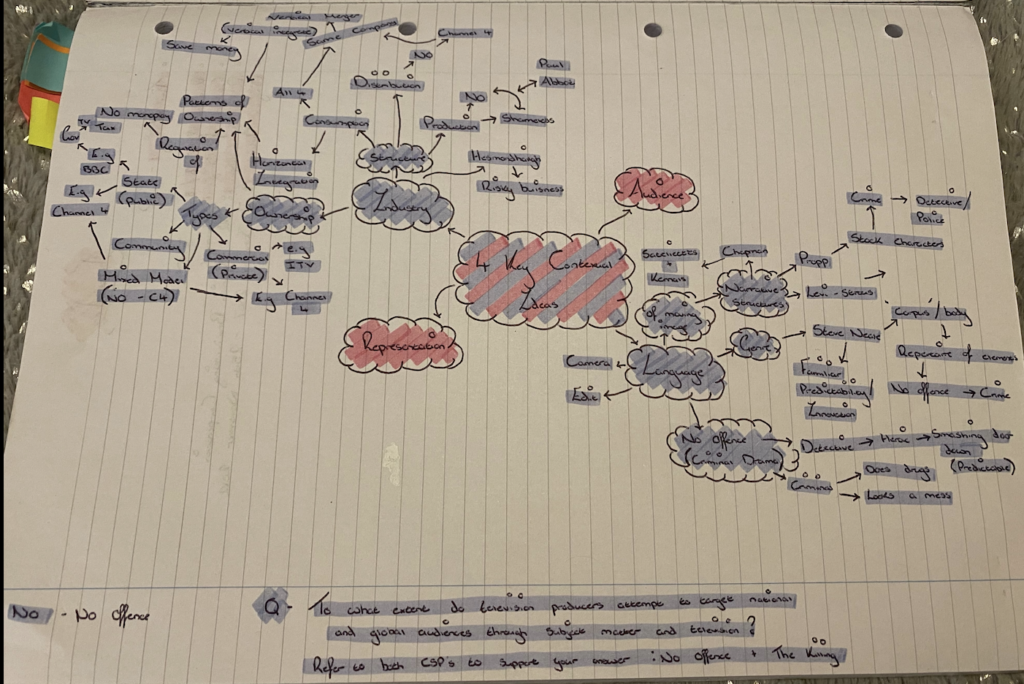Institution
KEY THEORISTS :
- Hesmondhalgh (The Creative Industries)
- Curran and Seaton (Ownership)
- Livingstone and Lunt (Regulation)
What is the difference between the culture industries and other industries?
The cultural industries “play a pivotal role in organising images and discourses through which people make sense of the world” (Golding and Murdock). The creative industries influence the way we think and look at the world around us.
There are similar processes in which creative industries and other industries work through production, distribution and consumption.
The creative/media industry is a risky business, meaning it is unpredictable. Creativity is not essential to life however there are necessities which are. All industries try to make a profit, this is the primary purpose so if this doesn’t happen, it won’t carry on.
The creative industries are versatile, diverse and don’t always follow a linear process of creativity – Unpredictability.
Media Ownership
Public Service Media/Broadcasting = State-related institutions.
- Government is at an ‘arms length’ from the media, they don’t control it but advise and ‘look after’ the content. It is critical of the government. –
- Funded by the public/ tax payer. Through TV License for BBC in the UK.
- No advertisements shown.
- Examples = BBC (British Broadcasting Corporation – Regional)
- Public Service provides impartial news (equal), high programming standards, no need to make a profit so, they can tailor to many different interests with their different channels (Diversity, provide for everyone)
- What is it? – Broadcasting that involves television, radio, film which is funded publicly (by the government via the general public). Its purpose is to cater to many different people, therefore providing a wide range of different programming. It needs to inform, entertain and educate whilst living up to high standards.
Commercial Media = Corporations
- Funded through advertisements.
- No state obligations, privately owned.
- Audiences don’t have to pay.
- Examples = ITV (Multi regional)
Transnational Media = Global control
- “communication, information or entertainment that crosses international borders without the regulatory constrains normally associated with electronic media”
- Has aspects of the company worldwide.
- Examples = Netflix, Sony, Apple, Disney
Curran and Seaton
- “Commercial broadcasting is based on the sale of audiences to advertisers” —-> Commercial broadcasters (such as ITV) need to secure long term advertising revenue to survive programming. – Jean Seaton.
- ”profit-driven motives take precedence over creativity in the world of commercial media”. – The business function of the media industries take importance over its creative expression.
- Due to risk, the production of media products has resulted in the organisation of a small number of global players (conglomerates) who use vertical and horizontal integration to control all of the worlds commercial production.
Conglomerate = A company that owns numerous companies involved in mass media enterprises.
Horizontal Integration = When a conglomerate acquires media companies of the same media type.
- Production costs reduced, sharing of resources, controlling the market.
Vertical Integration = Ownerships that allow a media company to produce and distribute products. Monopolies (companies that produce, distribute and consume) are illegal —-> Companies get around this by controlling the majority and giving an aspect over to another company to control.
- Production devisions, distribution services (without the need to employ externally, allowing full control)
Curran and Seaton suggest that ‘Culture is controlled by social elites’ who work for the benefit of themselves. They perpetuate the idea of ‘media pluralism’ which argues that the media industry should be populated by a range of companies (commercial and public).







